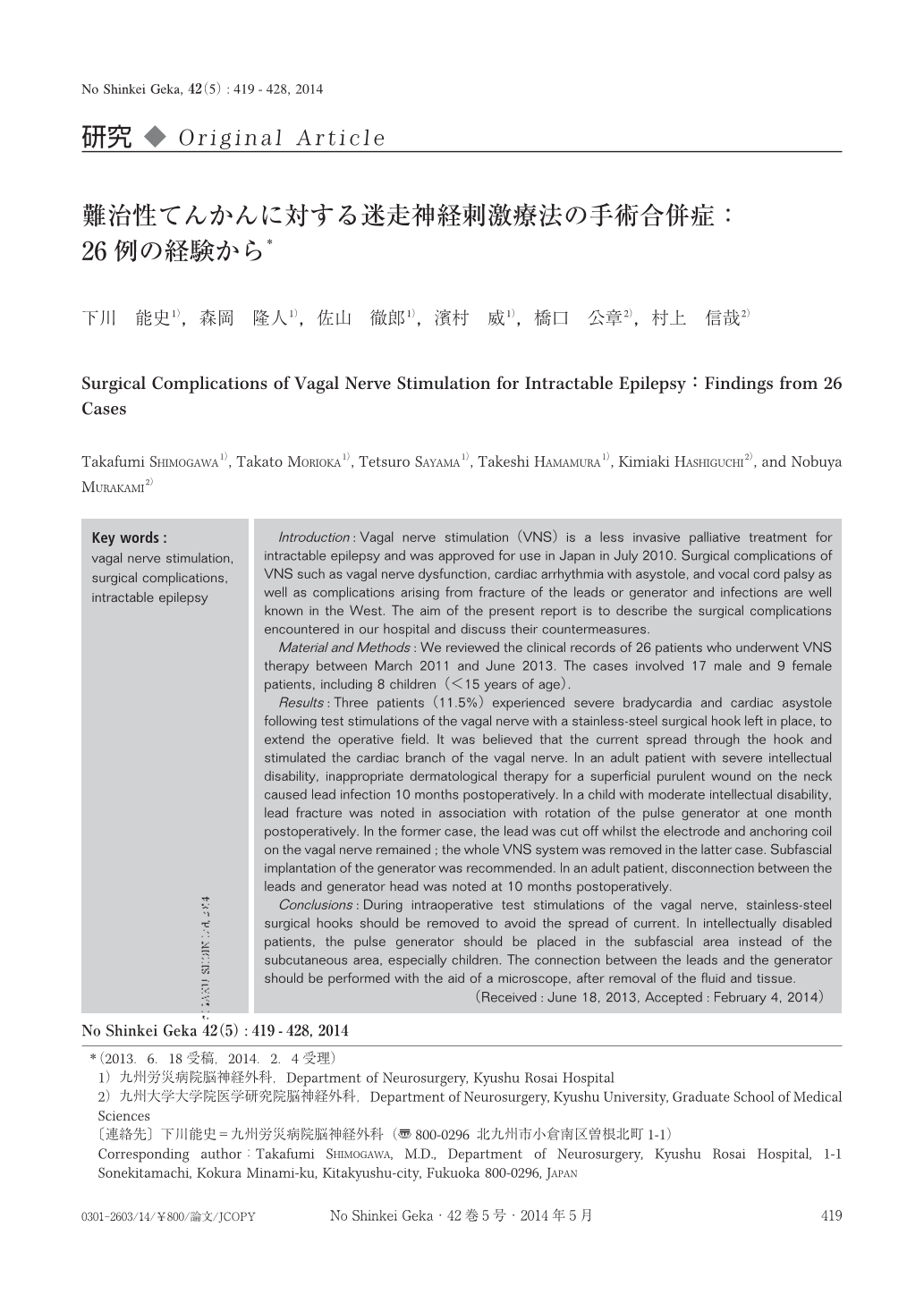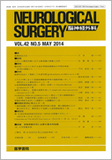Japanese
English
- 有料閲覧
- Abstract 文献概要
- 1ページ目 Look Inside
- 参考文献 Reference
Ⅰ.はじめに
迷走神経刺激(vagal nerve stimulation:VNS)療法は,難治性てんかんに対する低侵襲的な緩和治療である.VNS装置埋め込みの手術手技は,頚動脈内膜剝離術の手技に精通している術者であれば,比較的容易なものとされる17,18,40).しかし,迷走神経を取り扱う以上,不適切な手術操作は不整脈や心停止などの重篤な心臓合併症につながる可能性がある4,22,37).また,VNS装置の埋め込みに伴う感染や,装置の断裂・故障などの合併症に注意する必要がある1,2,5,8,13,14,17,23,27,36,37).VNS療法は,欧州では1994年に,米国では1997年に承認され,既に数万人の難治性てんかん患者がこのVNS療法を受けているので17),VNSに伴う手術合併症については多くの報告があるが,これらの合併症の発生率は低いといわれている1,2,5,8,13,14,17,23,27,36,37).一方,本邦における承認は2010年7月で25),3年を経過した現在,本邦でVNS装置の埋め込みを受けた患者はわずか487例にすぎず,手術合併症に関する報告はほとんどない17,18,40).われわれは2011年3月にVNS療法を導入し25),2年半の間で26例の難治性てんかんに対してVNS装置の埋め込み手術を行った.経験した手術合併症を詳細に報告するとともに,その対策について考察する.
Introduction:Vagal nerve stimulation(VNS)is a less invasive palliative treatment for intractable epilepsy and was approved for use in Japan in July 2010. Surgical complications of VNS such as vagal nerve dysfunction, cardiac arrhythmia with asystole, and vocal cord palsy as well as complications arising from fracture of the leads or generator and infections are well known in the West. The aim of the present report is to describe the surgical complications encountered in our hospital and discuss their countermeasures.
Material and Methods:We reviewed the clinical records of 26 patients who underwent VNS therapy between March 2011 and June 2013. The cases involved 17 male and 9 female patients, including 8 children(<15 years of age).
Results:Three patients(11.5%)experienced severe bradycardia and cardiac asystole following test stimulations of the vagal nerve with a stainless-steel surgical hook left in place, to extend the operative field. It was believed that the current spread through the hook and stimulated the cardiac branch of the vagal nerve. In an adult patient with severe intellectual disability, inappropriate dermatological therapy for a superficial purulent wound on the neck caused lead infection 10 months postoperatively. In a child with moderate intellectual disability, lead fracture was noted in association with rotation of the pulse generator at one month postoperatively. In the former case, the lead was cut off whilst the electrode and anchoring coil on the vagal nerve remained;the whole VNS system was removed in the latter case. Subfascial implantation of the generator was recommended. In an adult patient, disconnection between the leads and generator head was noted at 10 months postoperatively.
Conclusions:During intraoperative test stimulations of the vagal nerve, stainless-steel surgical hooks should be removed to avoid the spread of current. In intellectually disabled patients, the pulse generator should be placed in the subfascial area instead of the subcutaneous area, especially children. The connection between the leads and the generator should be performed with the aid of a microscope, after removal of the fluid and tissue.

Copyright © 2014, Igaku-Shoin Ltd. All rights reserved.


